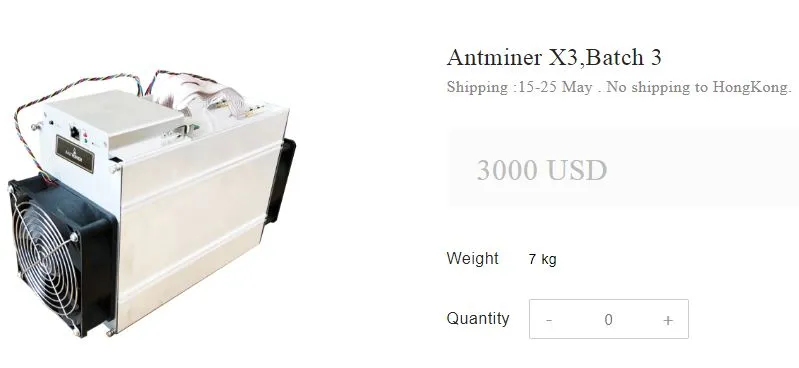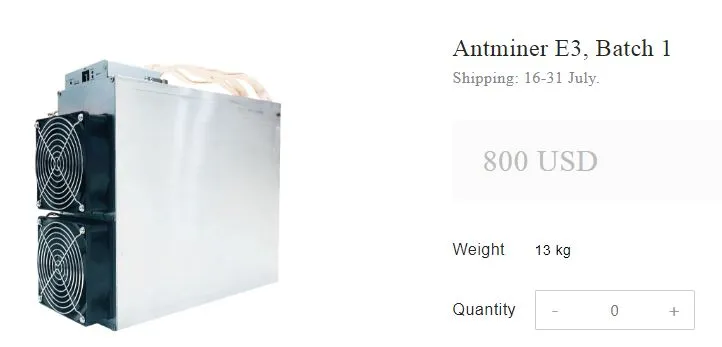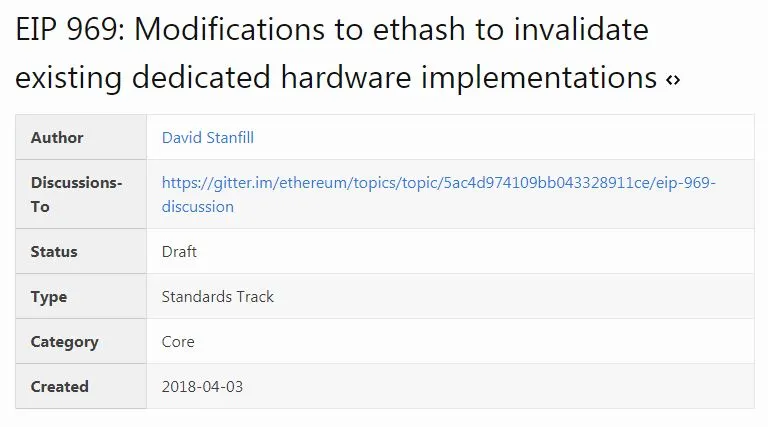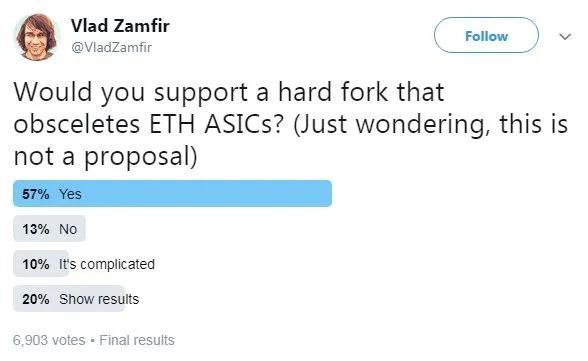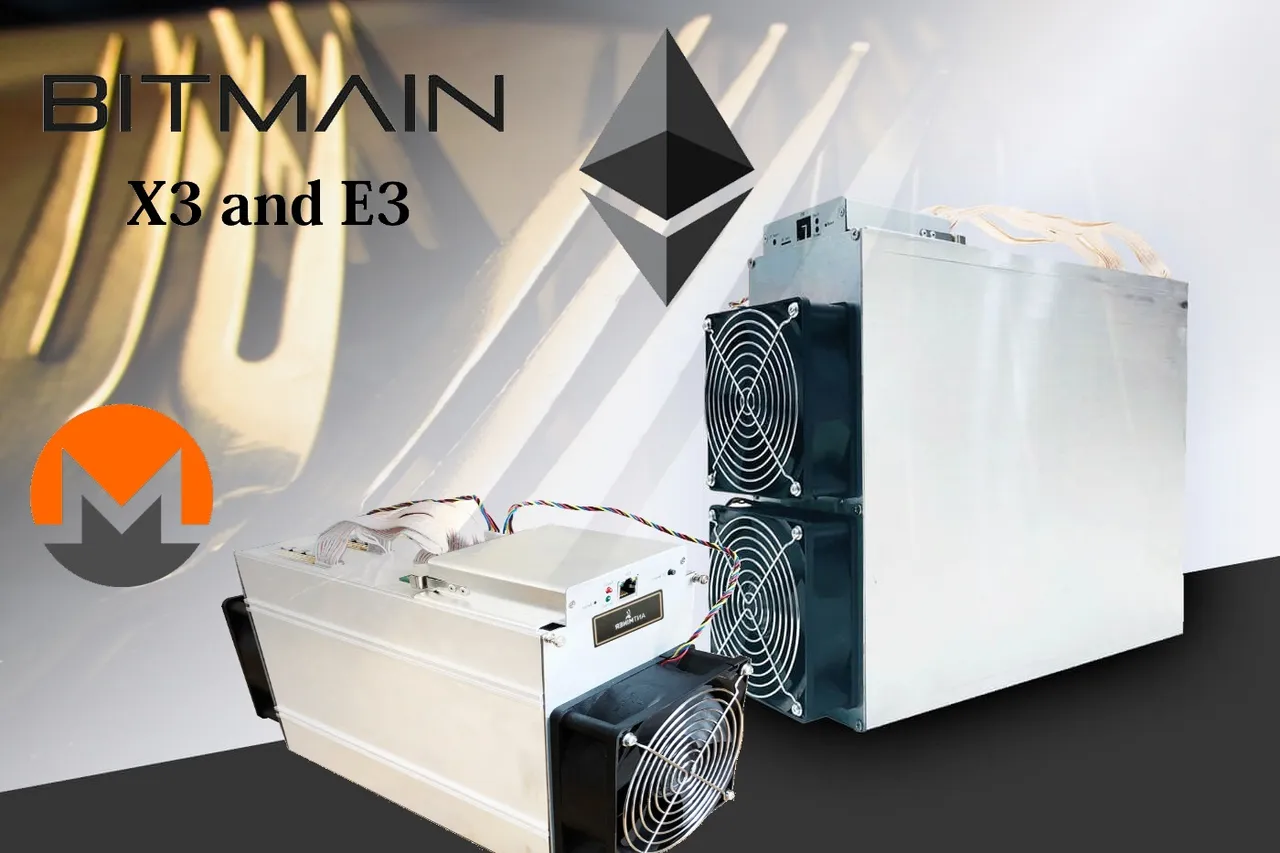
Bitmain, the Chinese manufacturer of mining equipment, recently developed Asics for Monero and Ethereum. While Monero switched to a new Asic-resistant mining algorithm via Hardfork, the Ethereum community is still undecided.
An Asic is a special computer chip built for one task. He performs this task unbeatably well, while he is not useful for everything else. These chips are perfect for tasks like mining Bitcoins, where the computer has to re-calculate the same algorithm over and over again.
Since mid-2013, the Asics have begun to dominate bitcoin mining. This ended the time in which hobby miners could use their graphics cards or build mining rigs with multiple graphics cards. Mining meant investing in a relatively expensive machine, making initial investment costs the most important mining cost factor - while Asics manufacturers became the ones who benefited the most. Due to the usual chip manufacturing structures, the markets for Asics centralized rapidly. Today one can say that there is hardly a manufacturer of relevance except Bitmain.
There are different views to the Asics. Some say they are bad because they centralize mining; the others say they are good because they dramatically increase the security of the network in proportion to the consumption of electricity, and by investing heavily in specialized equipment, incentivize miners to remain loyal to the system. While Bitcoin is proud to have formed the world's most powerful computer network through the Asics, many people in the cryptocoin scene outweigh the disadvantages. Not a few altcoins therefore have the explicit goal of being resistant to Asics. In addition, algorithms have been developed that make mining more complex in order to reduce the benefits of Asics or increase the effort required to develop them.
While the algorithms of Litecoin (Scrypt) and Dash (X11) have long been cracked by Asics, the algorithms of Monero (Cryptonight) and Ethereum (Ethash) have resisted for a long time. Now, however, Bitmain has released an Asic for the last two bastions of Asic resistance, the X3 and the E3 Miner. Both communities are not pleased, but react quite differently.
Monero: Not with us!
The goal of the CryptoNight algorithm used by Monero was explicitly to make mining egalitarian. The algorithm was designed not only to slow Asics down, but also to minimize the benefits GPUs have over CPUs. While it is unavoidable in the long term that an Asic will be formed for this as well, the Monero developers believe that "the transition to an Asics-dominated network should be as egalitarian as possible to maintain decentralization."
This is not the case with Bitmain's Asic. The recently introduced X3 is about 10 times more effective than a graphics card, which is little compared to the benefits of Bitcoin-Asics, but enough to be threatening. Because CryptoNight makes the production of Asics so difficult, market leaders like Bitmain have a huge advantage. The Chinese company is effectively a monopolist for Monero-Miner, and if it succeeds in further improving the Asic, while its competitors fail to bring the complex CryptoNight algorithm into an Asic, Bitmain threatens an unhealthily large impact on Monero to obtain.
"This creates a single point of failure," said some senior Monero developers on the currency's blog. "For example, a government might require the Asic manufacturers to install a 'kill switch' to use the miners can remotely control or switch off. This threat can destroy the whole network. Similarly, governments may require miners to have a license to operate an Asic to limit mining to a specific group of people. Finally, the licensing could go hand in hand with miners having to blacklist certain transactions ... "
The developers consider it important that Monero remains Asic-resistant. They therefore promise to neutralize any threat from Asics with a Hardfork. In addition, to preserve decentralization and discourage Asics' development, Monero will modify the mining algorithm with every regular semi-annual Hardfork. This will drastically reduce the half-life of new miners, and it will not really be worthwhile developing miner for Monero.
On April 6, a Hardfork took place and splitted Monero into 5 new chains. This will change Monero's Proof of Work Algorithm so that Bitmain's X3 Miner is no longer compatible with Monero. Bitmain's Antpool has already announced that it will be keeping an X3-compatible fork from Monero alive. Whether this coin will have a lasting value, is not yet in sight. The Monero community seems to be relatively unanimous behind the Fork. The X3 miners will lose value rapidly, but at least they can be used for other CryptoNight coins.
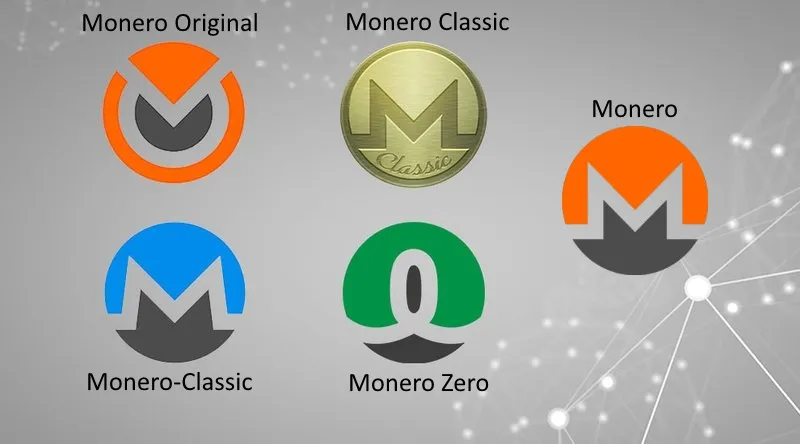
Ethereum: Not quite as clear
With the E3 Miner, Bitmain has also unveiled a Miner for Ethereum's Ethash algorithm. Also at Ethereum the community reacts little pleased, since the mining algorithm was specially designed to be resistant to Asics. As with Monero, many in the scene demand that Ethereum change the mining algorithm to eliminate Asics.
There is also an EIP (Ethereum Improvement Proposal) that aims to make mining more resistant to Asic. EIP969 "explicitly seeks to gain time by making it more difficult to develop new Asic technologies as we explore ways to maintain resistance to Asics in the long run." It looks like, the Ethereum community appears to be a majority in favor of the To slow down Asics from Bitmain. However, there are also various concerns.
Some users agree with the goal itself, but first want to know more about Bitmain's manufactured Asic before implementing a sustainable-resistant algorithm. Others say that the advantage brought by the Asics is not big enough to take the risk of a Hardfork (an E3 is about 6x as fast as a good video card), and yet others find the transition to proof of stake the Asics will turn off anyway. Because it is planned that Ethereum in the coming years, the mining completely gives up, and no longer requires work evidence for finding blocks, but evidence of having Ethers. At the latest then it can be assumed that there is a fork through which the miners continue a second Classic variant of Ethereum.
Derek Hsue from TokenEconomy magazine, however, writes that an Anti-Asic Hardfork involves a number of risks, but is never a definitive solution, but just another round of cat-and-mouse play. It makes more sense to make the algorithms as Asic-friendly as possible in order to promote competition in the Asic market. That this is not a recipe for success, however, shows the dominance of Bitmain for the very asic friendly Bitcoin mining algorithm SHA256.
But if Ethereum attaches so much importance to the resistance against the Asics that the community risked a possibly controversial Hardfork, is not yet decided. As it seems, however, there are only a few fans of Asics at Monero and Ethereum.
Image Sources:
- Post header created by myself
- https://shop.bitmain.com
- https://shop.bitmain.com
- http://eips.ethereum.org/EIPS/eip-969
https://twitter.com/VladZamfir/status/979060233430552576
- VladZamfir

Have a nice day!
LOVE&LIGHT

